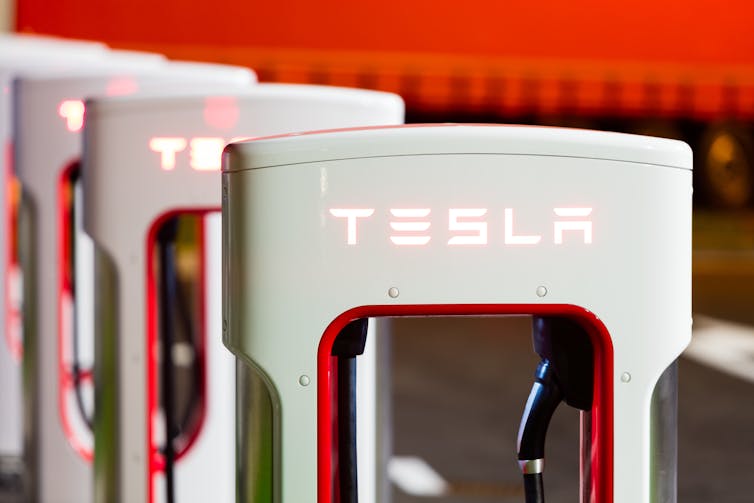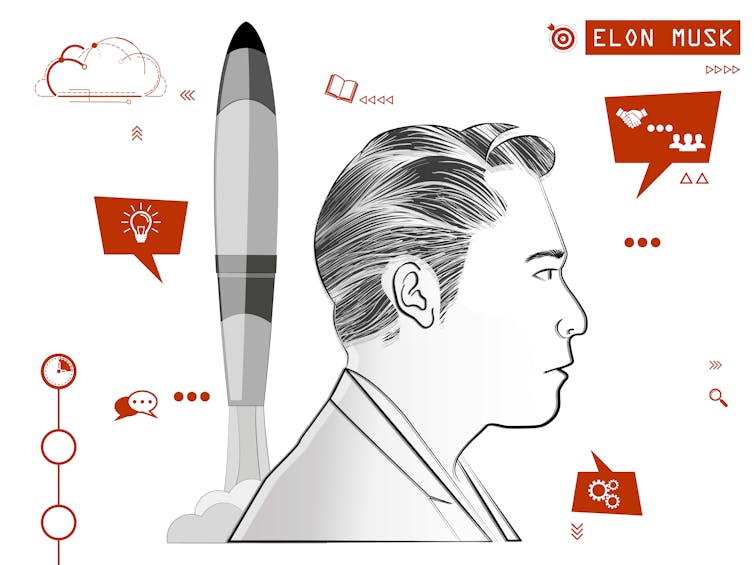Conversation Tesla
Comment: The claim that Tesla won’t need rescuing is for the birds
Published on: 6 August 2018
Writing for The Conversation, Dr Michael Price says that despite reporting improved revenues, Tesla still faces significant financial and operational trouble.

Wall Street is full of turnaround talk following Tesla’s second-quarter earnings results, sending shares in the futuristic electric car pioneer up almost 10%. Investors welcomed news that the company was burning through cash at a lower rate and revenues were considerably higher, yet the results also showed that Tesla’s financial and operational weaknesses have not gone away. From my reading of the figures, this is a company in real trouble.
With superstar tycoon Elon Musk in the driving seat, Tesla has become synonymous with niche luxury electric vehicles. Starting with the Roadster sports car in the late 2000s, it has been instrumental in overcoming barriers such as battery size and low maximum speed that were preventing electric cars from reaching the mass market. Now the company is ramping up production of the car it hopes will finally achieve that goal – the Tesla Model 3. This is turning out to be the toughest challenge so far.
In Tesla’s 2017 annual report, the company reported a net operating loss of more than US$2 billion (£1.5 billion) for the year, more than doubling to US$3.5 billion the total losses since inception in 2003. In the latest results, the size of the loss has wrongfooted analysts yet again, coming in at US$3.06/share when it was expected to be US$2.90/share. To break even this year and stop these losses piling up, the company needs to double its 2017 annual revenue. This rests on two things: it must produce and sell many more units of the Model 3 – and it must get control of its spiralling costs.
Factory frustrations
Tesla missed a crucial target to be making 5,000 Model 3s a week by the end of last year. Though it reached that milestone by the end of June 2018 – or 7,000 cars a week when you add in the slightly more upmarket Model X and Model S cars – Tesla will still take two years to meet the current backlog of more than 450,000 Model 3 pre-orders. This backlog prevents timely delivery of new orders and will thus damage future cash flows, unless Tesla can ramp production up.
Musk has a stated objective to bring the company out of “production hell” in the coming months. Tesla says it will hit 10,000 Model 3s a week at some point in 2019, which would be a huge step towards clearing the backlog, but question marks exist as to whether this is really achievable without significantly increasing capital expenditure. Indeed, plans to expand global sales in China have led to more questions about financing.
The genesis of the company’s financial woes seems obvious. In 2017 Tesla held a massive inventory of US$2.2 billion, which represents 18.8% of annual turnover. This has since risen to a staggering US$3.3 billion. Tesla claims it is due to late deliveries, but the reasons are much more complex than that.
Two key features that differentiate Tesla from its competitors are that it relies heavily on automation and is highly vertically integrated, creating much more in-house than most carmakers – from the software to the batteries to the electronics inside its cars. These strategies have imposed a very high capital requirement on the business, particularly the cost of investing in hyper-automated assembly.
The trade-off should have been that it would improve the production process, but it ended up creating a bottleneck that led to large production delays for the Model 3s. Musk admitted as much earlier this year:
To have any chance of staying solvent, Tesla needs to stop burning cash at such a colossal rate. The company’s quick liquidity ratio – the ability to meet short-term obligations – stood at 0.6 at the end of 2017, and has now fallen to an alarming 0.4. This means the company’s current assets are only 40% of what is required to cover short-term debts – way below the ideal level of 1. Cash burn may have improved, but the company is still going through it at an incredible pace – cash reserves have fallen to US$2.7 billion compared to US$3.2 billion three months ago.
While revenue significantly increased to US$4 billion with the new results, the net loss remains almost the same. In other words, Tesla is selling more cars but not harnessing the economies of scale it should be. The company’s quarterly gross profit from automotive sales is also down from 27.9% to 20.6% in the space of a year – dragged down by the Model 3. This suggests that the company is still beset with the operational bottlenecks and inefficiencies that have plagued its production for years. The fact that the company is dependent on an unprofitable vehicle has serious implications for the long-term future of the business.
Besides the production issues, the Model 3’s pricing strategy has also looked questionable since it launched last April. It is meant to start at US$35,000 to make it competitive with other cars in the same bracket, but Tesla is currently only selling the higher spec version, which starts at $49,000 and increases to $64,000 for the “performance edition”.
In comparison, the Model S starts at US$65,200. It is said to offer significantly better performance, but the differences with the Model 3 are actually quite modest. I am sure Musk would disagree, but it seems the principal difference between Tesla’s models are their exteriors. You therefore worry about the Model 3’s potential to cannabilise the Model S.
The future
Musk may believe that creating a mass-market product is the most important step to achieving his vision of an electric car future, but he has yet to deliver on the financial and operational competencies essential to sustain this. Many analysts have pointed out that Tesla’s current market valuation of US$50 billion seems to be extremely inflated. The shares are valued at 35 times the mean of analysts’ estimates for 2020 earnings. Historically, the average ratio on the S&P500 index is just 15.

Tesla’s credit rating has been deteriorating recently, making it harder to raise money from issuing bonds. The company has US$2.1 billion of debt to repay within the next six months – a repayment it will find extremely hard to make based its current cash position.
Deposits from pre-orders for the Semi truck and Roadster 2 sports car, due respectively in 2019 and 2020, have helped bring in some operating cash. All the same, it seems Tesla will need to raise additional funds, probably through equity, to avoid becoming completely insolvent.
Musk has just reiterated previous promises that Tesla would return to profit later this year and that no additional capital will be necessary. From where I’m standing, these claims seem simply outrageous.
Michael Price, Research associate, Newcastle University
This article was originally published on The Conversation. Read the original article.



